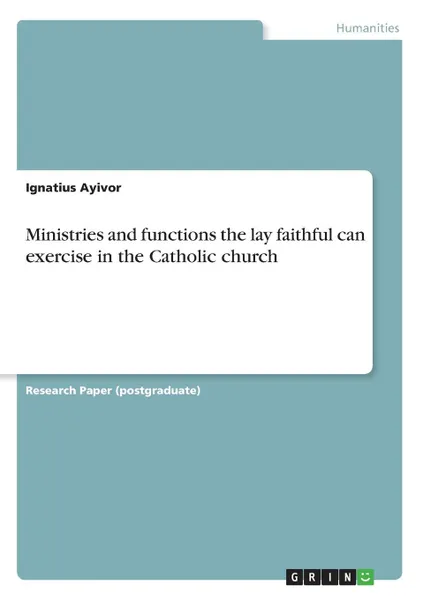Ministries and functions the lay faithful can exercise in the Catholic church 12+
📓 Research Paper (postgraduate) from the year 2010 in the subject Theology - Practical Theology, grade: 1.5, , language: English, abstract: In the early Church, the question of who was a lay person or who was not a cleric was not much of a concern since the Church acted as one body. Any action taken by the part of the Church members involved the action of the whole Church. However, this does not mean that in the nascent Church all the members formed a kind of amorphous body in which there were no distinctions. Since the genesis of the Church, there has been a distinction among her members. There are two different categories of Christ's faithful. There are the clerics and the lay faithful. The clerics are the ordained members and the lay faithful are the non-ordained members. The two groups are not regarded as different ontologically. One group is not more important or more a member of the Church than the other. Both categories have rights and obligations in the Church.All who are baptized or are received into the Church are regarded as Christ's faithful. The term "Christ's faithful" applies to all baptized Christians regardless of their state or rank in the Church. As one is baptized or received into the Church, he or she gains membership by the virtue of the baptism that is recognized as sacramental. According to c. 228 of the 1983 Code of Canon Law lay people who are qualified and suitable can be admitted to ecclesiastical offices and functions by the sacr...
Мнения
